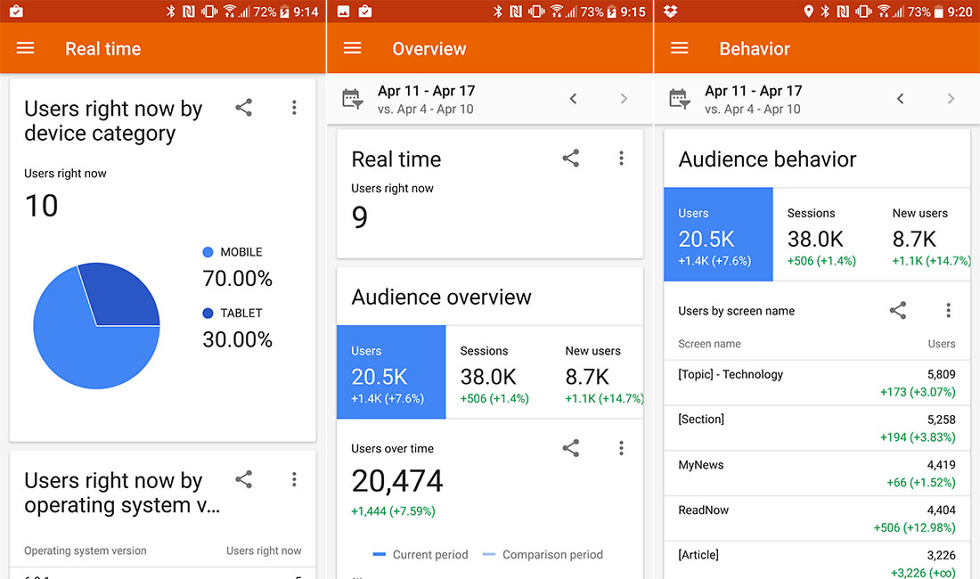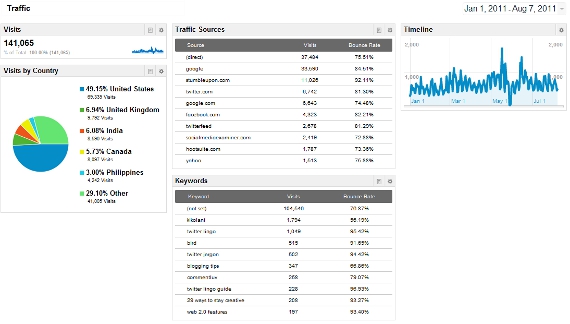Google Analytics To Do Listfree Download
The analytics.js library (also known as 'the Google Analytics tag') is a JavaScript library for measuring how users interact with your website. This document explains how to add the Google Analytics tag to your site.
- Free Google Analytics
- Google Analytics To Do List Free Downloads
- Download Google Analytics Report
- Google Analytics To Do List Free Download Utorrent
- Google Analytics Log In
The Google Analytics tag
The Google Analytics tag should be added near the top of the <head> tag and before anyother script or CSS tags, and addthe property ID of the Google Analytics property you wish to work with.
Google Analytics supports a lightweight, low-overhead approach to measure and analyze visitor metrics for websites and mobile apps. With little setup, you can gather the actionable metrics that you need to make data-driven decisions: create hypotheses, experiment, do A/B testing, and decide whether to continue with your plans or pivot. Set up Google Tag Manager. Google Tag Manager is a free tag management system from.
Tip: If you do not know your property ID, you can use the Account Explorer to find it.The above code does four main things:
- Creates a
<script>element that starts asynchronously downloading the analytics.js JavaScript library fromhttps://www.google-analytics.com/analytics.js - Initializes a global
gafunction (called thega()command queue) that allows you to schedule commands to be run once the analytics.js library is loaded and ready to go. - Adds a command to the
ga()command queue to create a new tracker object for the property specified via the'GA_MEASUREMENT_ID'parameter. - Adds another command to the
ga()command queue to send a pageview to Google Analytics for the current page.
- Download the General Analytics Dashboard. My Google Analytics SEO dashboard is good for getting a glimpse at your SEO, but the absolute best way to get SEO analytics is through the “landing pages” tab in Google Analytics as well as the “Search Analytics” section in Google Search Console. See instructions below.
- Power Queries Do you need to build reports that are outside the scope of the free reports offered by Google? Multiple Account Multi-View Multi-segment Powerful ways to use goals, events, multi-channel funnels Up to ten dimensions and seven metrics - downloaded in one query Re-usable queries over many accounts and views Big data, Efficient Refresh Automated Data Refresh.
- The official Google Analytics mobile app lets you monitor all of your Analytics properties so you can keep track of your business while you're on the go. With this app, you can: 1) Check key metrics in built-in reports 2) Monitor real-time data 3) Compare date ranges and apply segments 4) Build.
Custom implementations may require modifying the last two lines of the Google Analytics tag (the create and send commands) or adding additional code to capture more interactions. However, you should not change the code that loads the analytics.js library or initializes the ga() command queue function.
Free Google Analytics
Alternative async tag

While the Google Analytics tag described above ensures the script will be loaded and executed asynchronously on all browsers, it has the disadvantage of not allowing modern browsers to preload the script.
The alternative async tag below adds support for preloading, which will provide a small performance boost on modern browsers, but can degrade to synchronous loading and execution on IE 9 and older mobile browsers that do not recognize the async script attribute. Only use this tag configuration if your visitors primarily use modern browsers to access your site.
What data does the Google Analytics tag capture?
When you add either of these tags to your website, you send a pageview for each page your users visit. Google Analytics processes this data and can infer a great deal of information including:
- The total time a user spends on your site.
- The time a user spends on each page and in what order those pages were visited.
- What internal links were clicked (based on the URL of the next pageview).
In addition: The IP address, user agent string, and initial page inspection that analytics.js performs when creating a new tracker object is used to determine things like:
- The geographic location of the user.
- What browser and operating system are being used.
- Screen size and whether Flash or Java is installed.
- The referring site.
Next steps
For basic reporting needs, the data collected via the Google Analytics tag can suffice, but in many cases there are additional questions you want answered about your users.
The guides on this site explain how to measure the interactions you care about with analytics.js, but before implementing a particular feature, it's highly recommended that you read the guides listed under the Fundamentals section in the left-side navigation. These guides will give you a high-level overview of the analytics.js library and help you better understand the code examples used throughout the site.
The next guide in this series explains how analytics.js works.
Still not set up on Google Analytics? Don't worry, you're not alone, and this post will tell you exactly how to install Google Analytics on your website.
Whatever your business and marketing goals, you need to be able to measure the right metrics. Here's a quick walkthrough of how to install Google Analytics on your blog or website to measure and analyze your traffic. If you don't know what Google Analytics is or don't know how to install it on your website, then read on. For the simplified step-by-step instructions to install Google Analytics, scroll down to the numbered steps.
How to Install Google Analytics, Detailed Version
To install Google Analytics tracking for any website, the very first thing you need is a Google account. If you don't already have one that you use for Google's other services like Gmail, Google Drive, YouTube, etc., create one now.
Next, use your Google account to set up a Google Analytics account. On the Google Analytics page, click SIGN IN then ANALYTICS. If prompted, choose or sign in to your Google account.
Now you need to set up an Analytics property (a property in Analytics is just a website you are tracking; each website you want to track should get its own Analytics property). While signed in on the Google Analytics page, click ADMIN on the bottom left with a gear icon.
In the ACCOUNT column, use the dropdown menu to choose the account to which you want to add the property. Then, in the PROPERTY column, select Create new property from the dropdown menu. Fill out the Website Name, URL, Industry Category, and Reporting Time Zone and click Get Tracking ID.
Once you get your Google Analytics code, you will install it on your website in one of two ways:
Add the Global Site Tag (gtag.js) tracking code snippet to every web page you want to track by copying and pasting it just after the <head> tag for each page. The tracking code snippet should be the first item in the <head> section. You'll use this method if your website is built with HTML files.
-OR-
Enter the tracking ID into the field that asks for the Google Analytics tracking ID. Many web-hosting services now have a simple field to enter the tracking ID just once, these include Shopify, Tumblr, and WordPress among many others. If it exists, this field can usually be found in the Analytics or Admin section of your web-hosting service.
To find your tracking ID and tracking code snippet, click Admin from any Google Analytics page while signed in to your Analytics account. Choose the account from the dropdown menu in the ACCOUNT column. Choose the property from the dropdown menu in the PROPERTY column. Below PROPERTY, click Tracking Info then Tracking Code. The tracking ID and tracking code snippet will appear to the right for the selected property.
To check if your tracking code is set up properly, navigate to the property you just set up in your Google Analytics account. In the left panel, click REAL-TIME then Overview. If this report has data, then your tracking code is properly set up and collecting data. If your tracking code isn't working properly, you can troubleshoot your tracking-code setup here.
How to Install Google Analytics, Abbreviated Instructions
- If you don't already have a Google account, create one.
- Go to Google Analytics and click SIGN IN.
- To set up an Analytics property, click ADMIN.
- Under ACCOUNT, select your account from the dropdown menu.
- Under PROPERTY, select Create new property from the dropdown menu.
- Enter the details for your website and click Get Tracking ID.
- Install Google Analytics on your website using one of the following methods:
- If you use a web-hosting service that has a field for Google Analytics tracking ID, enter the tracking ID into that field.
- If your website is built with HTML files, copy/paste the Global Site Tag (gtag.js) tracking code snippet just after the <head> tag for every web page you want to track.
How to Set Up Google Search Console
The good news is, whether or not you've set up Google Search Console, data is already being collected about your site and the search terms for which it ranks in Google Search. All you need to do is verify with Google that you are the site owner and you will get access to this important data about your search rankings.
To set up your Search Console account:
- Go to Google Search Console and sign in.
- Click ADD A PROPERTY
- Type your URL into the pop-up and click Add.
- Select your domain name provider from the dropdown menu, click VERIFY, then follow the steps to complete verification.
- Though Google already has the data for your site, it may not be immediately available to view after you verify. If that's the case, give it a few days and check back.
Leveraging Google Analytics and Search Console for Content Marketing
If you're using Google Analytics and Search Console because you're a content marketer, or you're just starting out with content marketing, check out Scripted to find great writers and multiply your content marketing output. When you register, you'll automatically get free access to our content marketing course with helpful tips and tricks to get the most out of your content. Here's some of what you'll learn:
- Proper goal-setting for content marketing
- Keyword planning to ensure you're targeting the best keywords for your business
- Keyword research tactics so you never run out of keyword ideas
- How content should be budgeted
- Finding and working with freelance writers
- Creating effective guidelines to ensure great content every time
- Publishing with the right metadata for SEO
- Promoting your content on social media to maximize its reach
- Getting backlinks and syndication to boost your site's credibility
- Leveraging your blog content in email marketing
Google Analytics To Do List Free Downloads
- Measuring and maximizing ROI on your content marketing
Download Google Analytics Report

Register for Scripted now to get free access to our content marketing course that covers all of the above and more!
Google Analytics To Do List Free Download Utorrent
Subscribe for the latest in Content Marketing & Freelance Writing!
Google Analytics Log In
While you're here, have you tried Scripted lately?
Used to be a member, but moved on? Heard of it, but never signed up?The current iteration of Scripted will amaze you!Streamline your content writing efforts and build your own team of high-quality writers.It's all you need for content writing.Try it free todayand meet your next favorite writer or writers!
